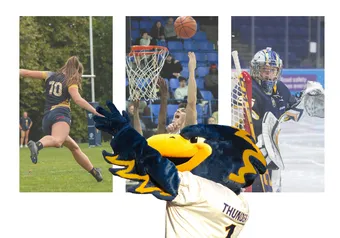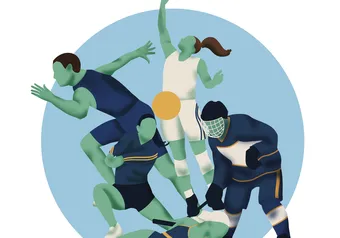Two steps into Pacific Spirit Regional Park and I am lost in the trees. Each one is different from its neighbour in size and shape. Some you can wrap both arms around without effort Others you can barely grasp half of the trunk. A few defy gravity with a curvature that would make Newton smile. Others are conquered by fungi.
A light breeze makes the thinner trees sway back and forth like a pendulum. On their branches, birds chirp rhythmically in organic fashion. The park is alive, but I am left out of the conversation.
Near my feet, there are sword ferns and small plants. Together they create a mosaic of burgundy and green that extends into the horizon where distant blue mountains and grey clouds reside. I then take my third step. The gravel path takes me further away from the concrete buildings, car noises and classrooms into this natural symphony as I breathe in shots of fresh air.
Deeper into the woods, fallen logs block the path. Some are hurdles that are easily crossed and one provides a nice resting spot later in the journey. While sitting down, you can see their roots lifted up from the earth and moss spreading over their trunks. Curiously, there are no squirrels in the forest today.
On campus, the common black or grey one is spotted while walking down Main Mall any day of the week. Yet none are seen here. Another animal missing in action is the seagull. But no tears are shed in their absence. As the path moves along, familiar faces walk past It feels wrong to say something, so everyone obeys the unwritten rule to maintain silence in going about their separate journeys.
It is hard not to think about poet Henry David Thoreau in this situation. This quiet pilgrimage feels familiar to his adventures at Walden Pond when he lived in a cabin deep in the wild. I remember reading that during his retreat he usually walked about 20 miles a day and wrote when time allowed. Theodore Roosevelt, the former president of the United States, was also an avid outdoorsman.
In college, he published a book on birds and took many courses on natural history. Later in his life, this passion led him to buy a cattle ranch, walk among the giant sequoias in California, go hunting in Africa and risk his life while navigating the Amazon.
I can only imagine them in this park. A boulder is discovered off to the right of the path. There are no initials circled with a heart — the classic romantic gesture — and no graffiti from a rebellious student In other words, it is the complete opposite of the Cairn.
Past the boulder there are more trees and plants, and the search for animals remains empty — which is peaceful yet upsetting. The path descends gently down a slope, and from behind the sound of voices breaks the silence.
A class has come to the forest Unable to tell what they are doing, I turned around and walked slowly over to where they gathered, making sure to give them enough space. The students are carrying what looks like wooden pyramids, but this raises more questions than answers. Laughter makes it hard to understand what they are saying as well.
Time to move on. With homework and classes waiting, the return trip begins. The nice thing about this park is that it is hard to get lost, and even when you do, you will probably still have WiFi.
Although feeling proud to avoid looking at my phone throughout the walk, the urge has never left like a persistent mosquito. Maybe this is because nature is rarely exciting. And compared to a video of a hedgehog getting a bath, it is not that humorous either. But walking back toward the entrance of the park, you are tempted to stay longer among the ferns and trees even though nothing has changed.
The entrance is now in view. Outside homes worth millions stand and luxurious cars move along the sombre streets while drops of rain start to fall.
With the protection from the trees gone once past the gate, I leave the park behind and return to the real world.
Share this article
First online





